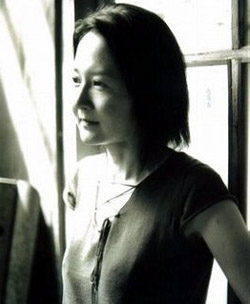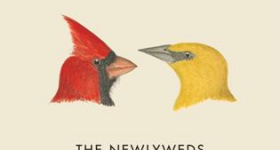Edgar Allan Poe, the master of macabre
tales, once declared: "A short story must have a single mood and every
sentence must build towards it." He noted that a short story writer
"has not fashioned his thoughts to accommodate his incidents, but [has]
deliberately conceived a certain single
effect to be wrought." With these words, Poe could be describing the
stories in Yoko Ogawa's tightly woven and masterfully detailed new collection Revenge:Eleven Dark Tales.
In this collection of short stories,
Ogawa creates a world that is unsettlingly quotidian. In "Afternoon at a
Bakery," the collection's opener, a sun-splashed Sunday, is dotted with
scrupulous details ("the roof of the ice cream stand, the faucet on the
drinking fountain, the eyes of a stray cat") that build to a singular
uneasiness, culminating with a mother waiting to buy strawberry shortcake for
her dead child on his birthday as the bakery girl weeps quietly into the phone.
In these stories, Ogawa weaves together
patterns of intersected lives. There's a post office that characters from
different stories enter; kiwis in an abandoned building that one character
hungrily eats and that hide the remains of a mangled cat from another
character; a train stuck in snow that causes delays for some but not all the
characters on their way to their death; and ripe tomatoes used in a salad in
one story and gifted to a murderous neighbor in another. While such an insular world could seem
claustrophobic, the stories are leavened by a matter-of-fact existence where
characters are caught in the gossamer of eerie desires.
At times, the links are disconcerting
and surprising. In "Sewing for the Heart," a tailor searches a
hospital for a client for whom he has sewn an exquisite leather bag to protect
her heart, which happens to exist outside her body. As the tailor enters the
hospital where his client undergoes a heart surgery which would render his bag
useless, he hears the public address system calling for a Dr. Y who has gone
missing, the circumstances of which have been told to us in a different story.
As the tailor clutches the bag he has painstakingly crafted, he remembers the
dead hamster he threw away in a fast-food restaurant -- which then makes
another appearance in a subsequent story, when a character throws out a cup of
coffee, sees the hamster's dead body, and notices how the hamster's dead body
moves with the life of hundreds of maggots "worming into its soft
belly." Ordinary questions in the narrative -- does the tailor find his
client? is the missing Dr. Y found? -- are replaced by a feeling that Ogawa has
captured a world in which everything is connected and that these connections
are themselves rife with significance.

Yoko Ogawa
While the narrators of the stories
change gender, occupation and circumstance, they remain familiar inhabitants
living in a world of murderous desire, fulfilled or unquenched, and most
American readers will undoubtedly notice the echoes of Poe's Gothic short
stories. (Ogawa's work is written in Japanese, with this excellent
English-language translation by Stephen Snyder.) In Poe's "The Pit and the
Pendulum," the narrator bears witness to his own terror, caught in
darkness and not able to see the death pit in which he is imprisoned -- but it
is his hope of escape that chills his heart more than the terror of
circumstance. This reversal, which also
surfaces in Ogawa's stories, suggests that what appears to be a promise to the
living may actually be better understood as an acceptance that, in reality,
everyday people act on their hatreds, to the point of causing death.
Readers may also find similarities
between Ogawa's words and the images of contemporaries like the visual artist
Hisaji Hara, whose photographs
depict a
wink-and-nod perversity expressed by adolescent boys and girls. In Hara's A Study of 'The Victim' (2009), a young
girl dressed in a school uniform lays strewn across four wooden chairs. She
stares directly into the camera. Her right leg is raised slightly, with her
foot resting against the back of a chair, while her right arm leans
outstretched and languid over her head. The palm of her hand, with her fingers
slightly curled, hovers over a bread knife on the floor. Is she a victim of a
crime or a murderer playing out how her victim would look as she lay dying?
Hara's photograph conveys a studied
anticipation of death that bears resemblance to Ogawa's finale "Poison
Plants," which masterfully spins through a vignette of images and
characters from previous stories before seamlessly rounding back to the first
story of the cake-buying mother. I won't spoil the ending except to note that
the descent into the maelstrom of the murderous world concludes with a tour de
force that is as riveting as any of the singular effects wrought by Poe.
Somewhere, Poe is surely reading Ogawa's Revenge
with a twitch of a smile, recognizing the skilled storytelling of a fellow
writer who knows how to expose hidden terrors and desires that any one of us may
harbor on an overly bright Sunday afternoon as we make our way to the bakery.
Jee Yoon Lee teaches at the George Washington University and maintains the blog writinglikeanasian.blogspot.com.









Comments